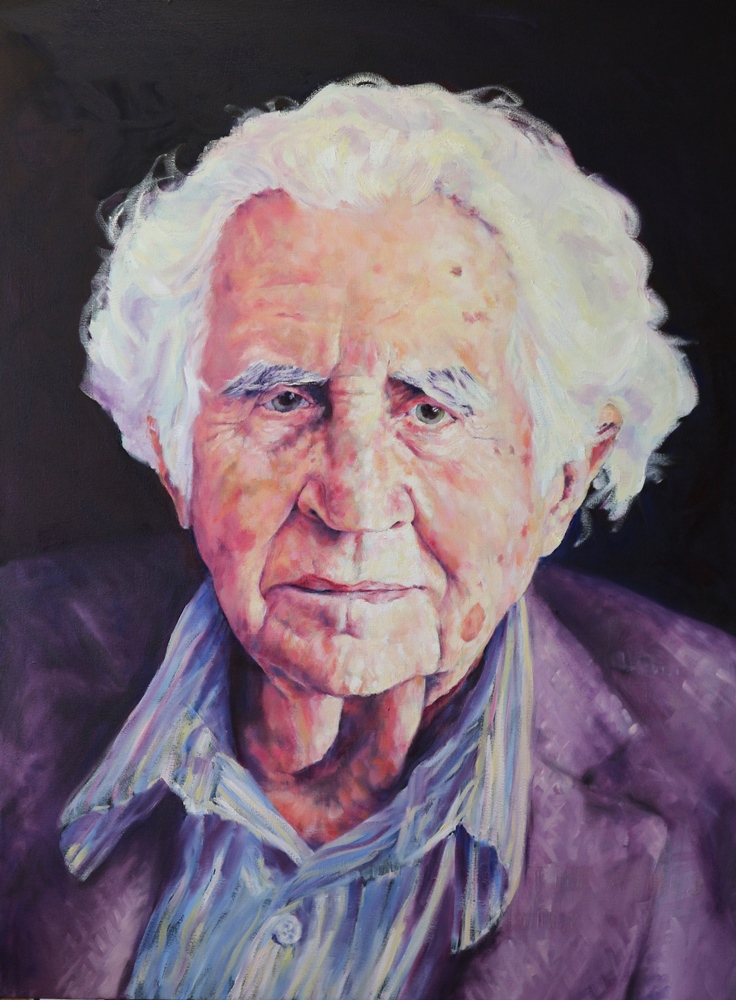
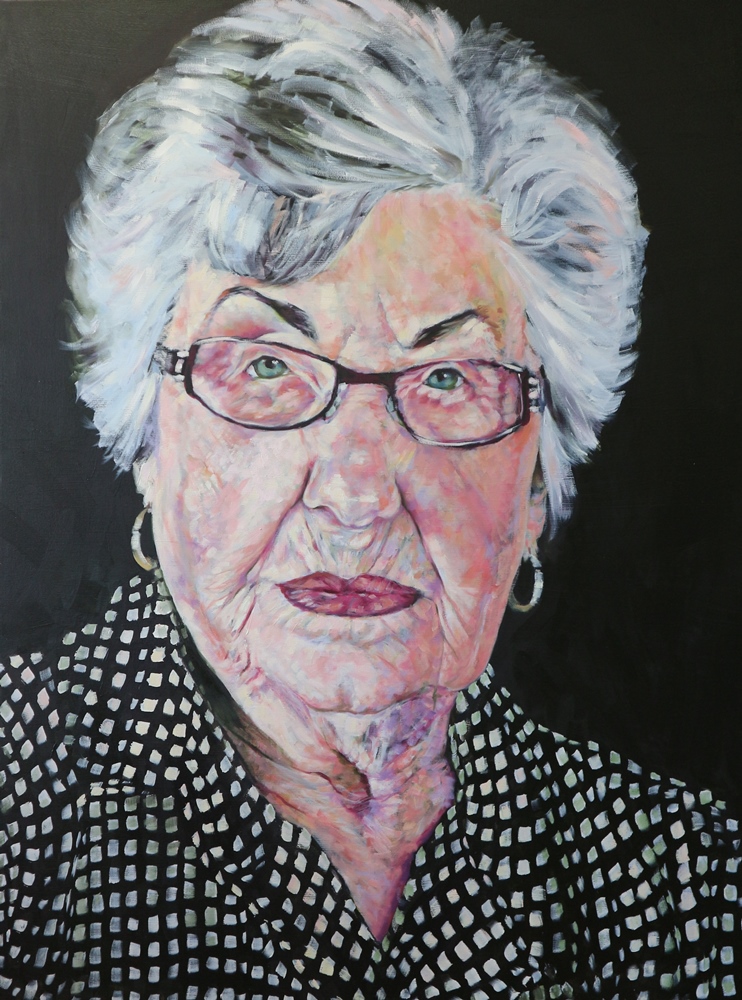
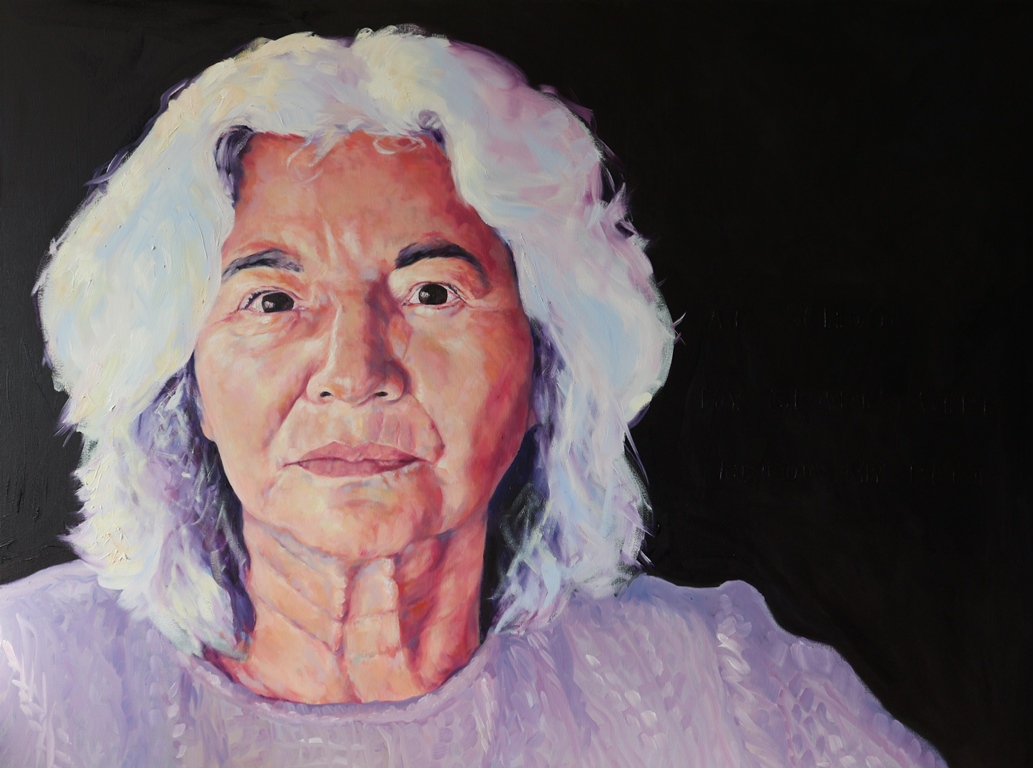
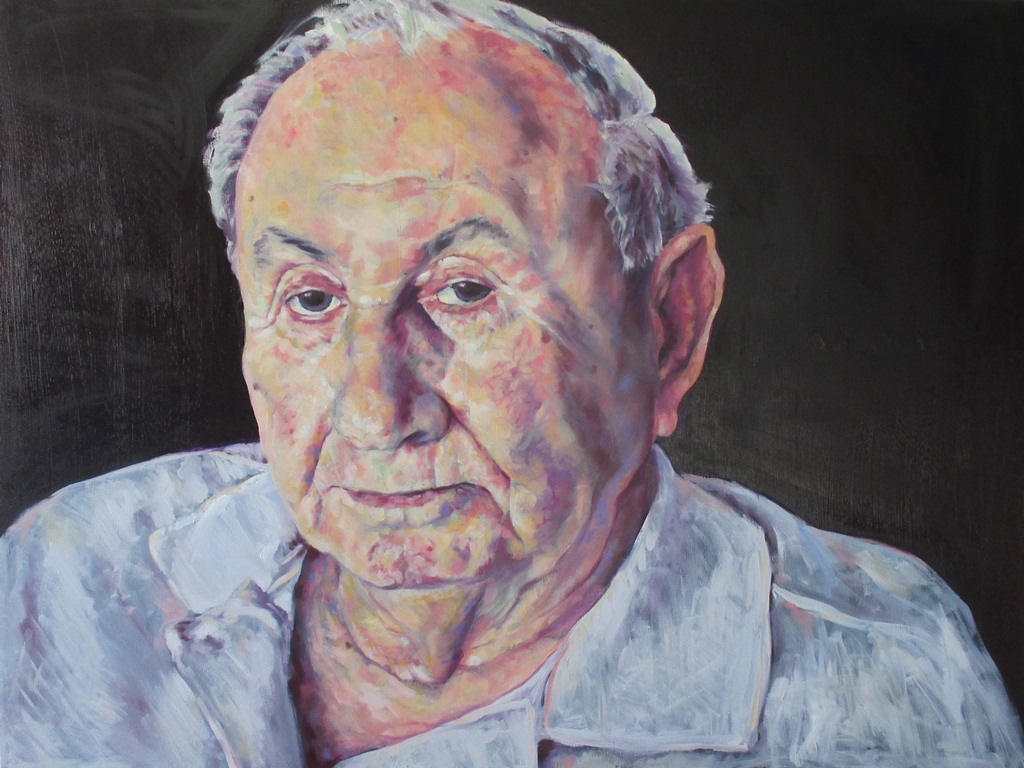
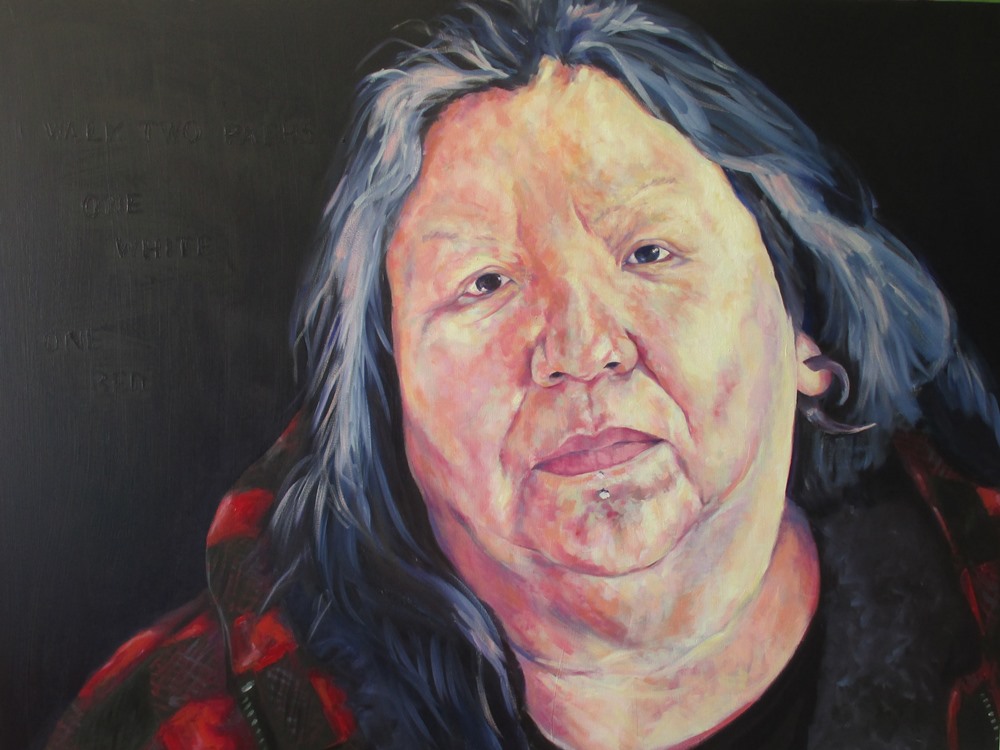



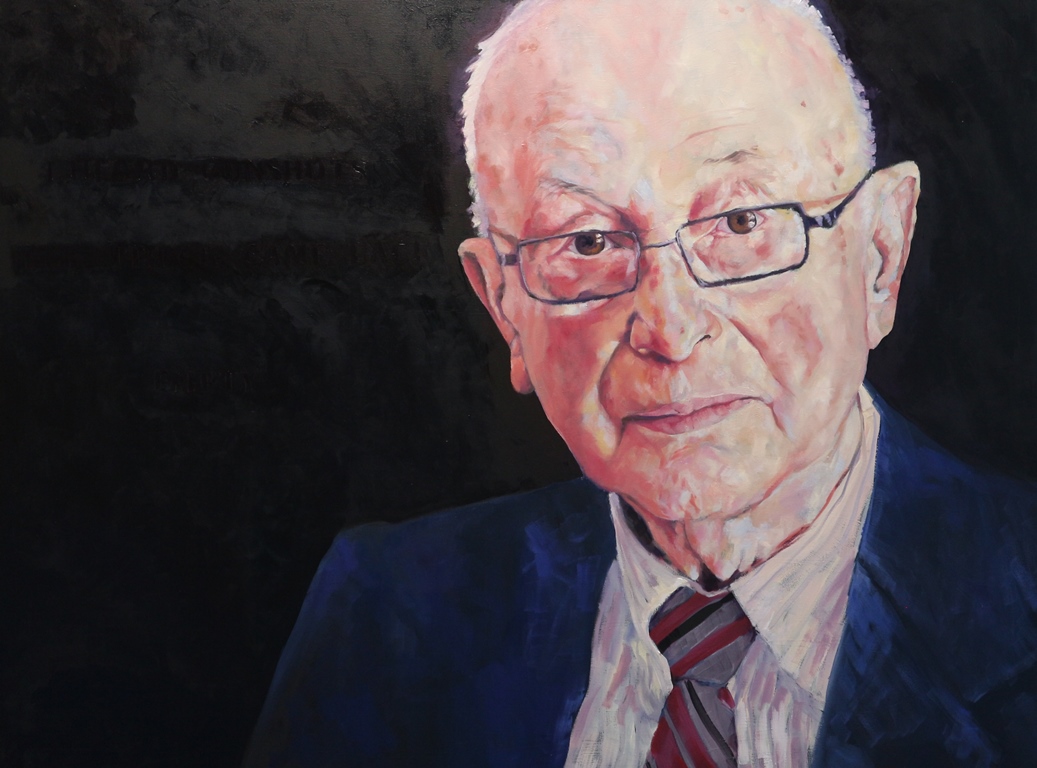
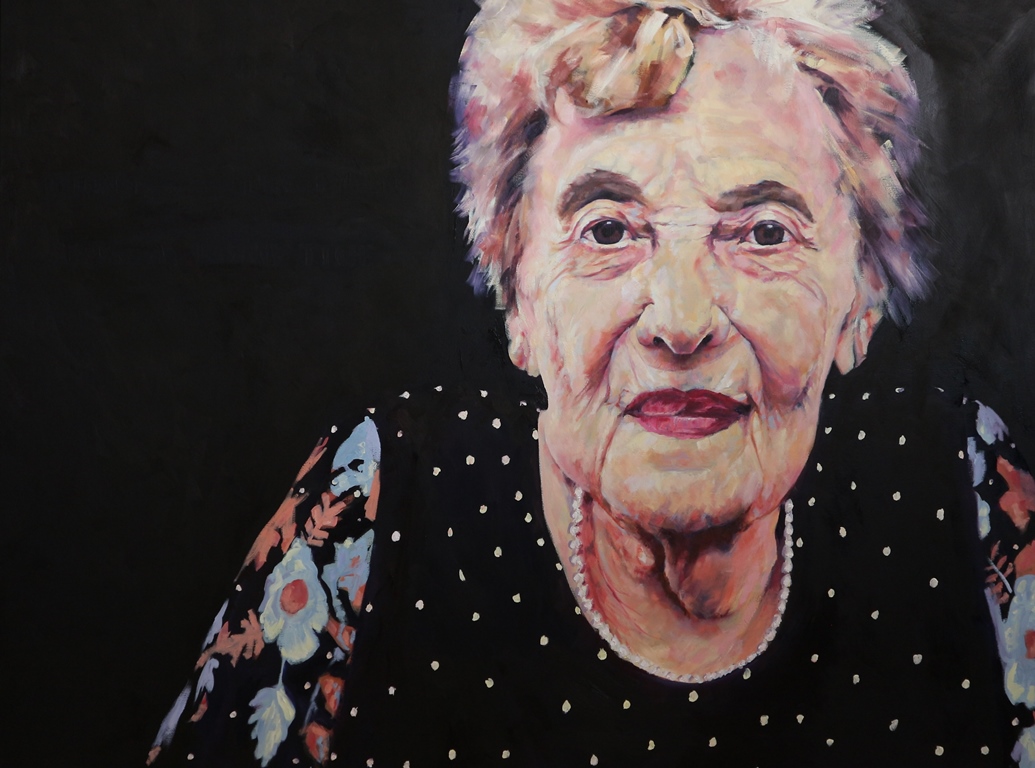
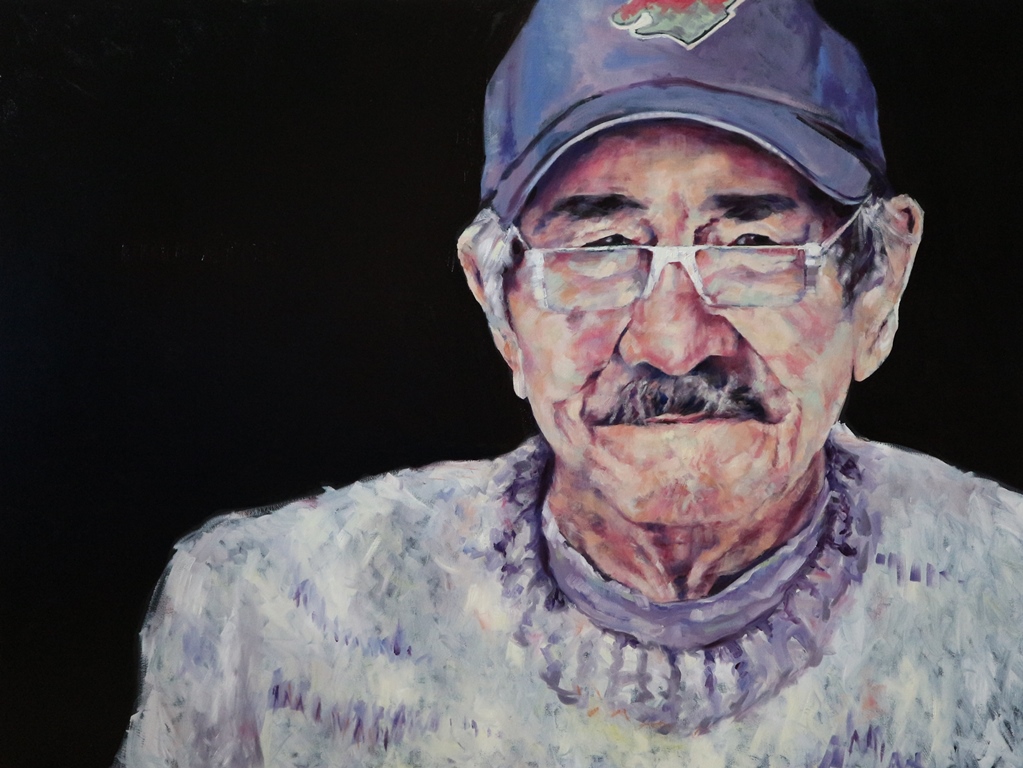
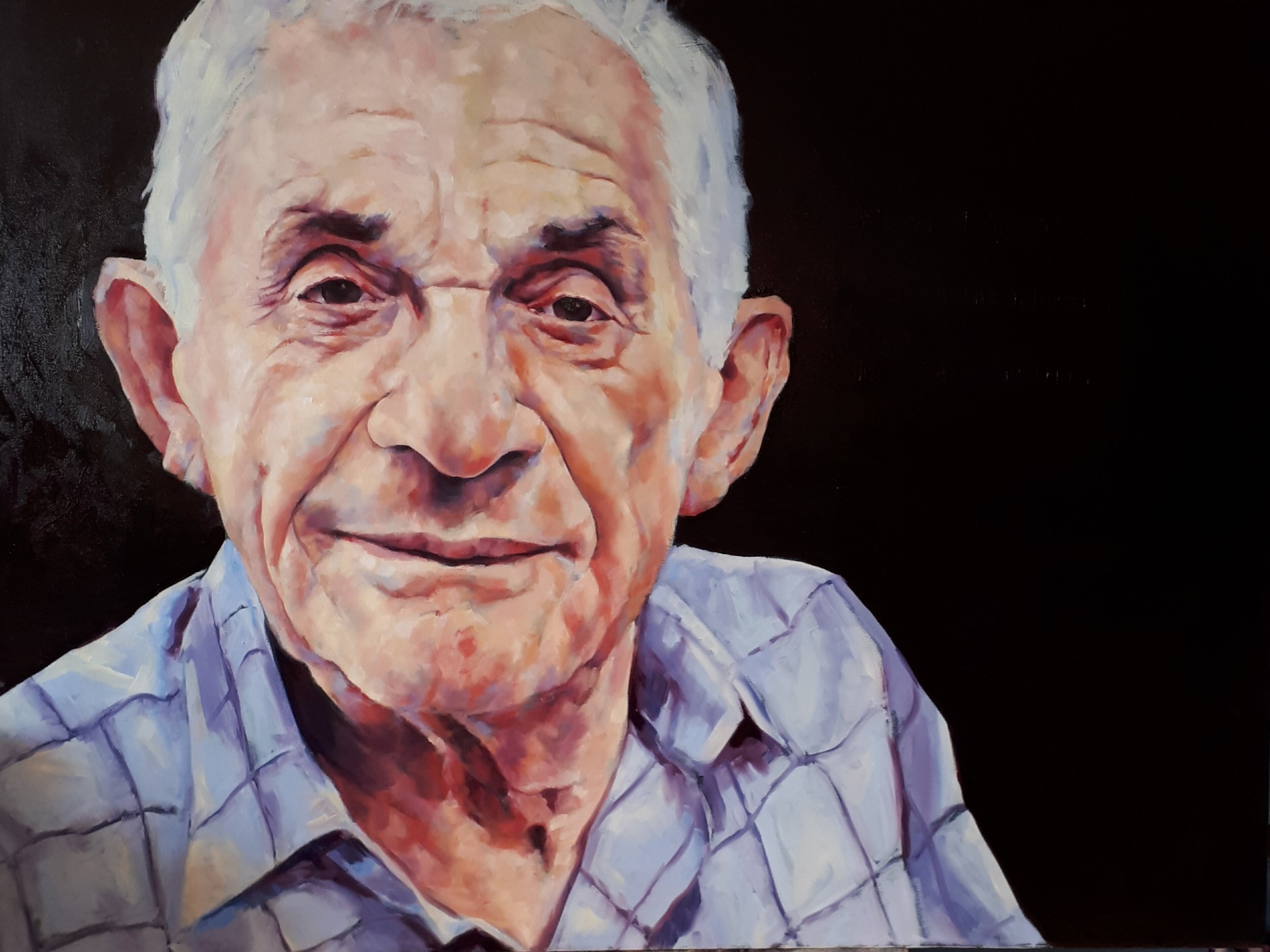
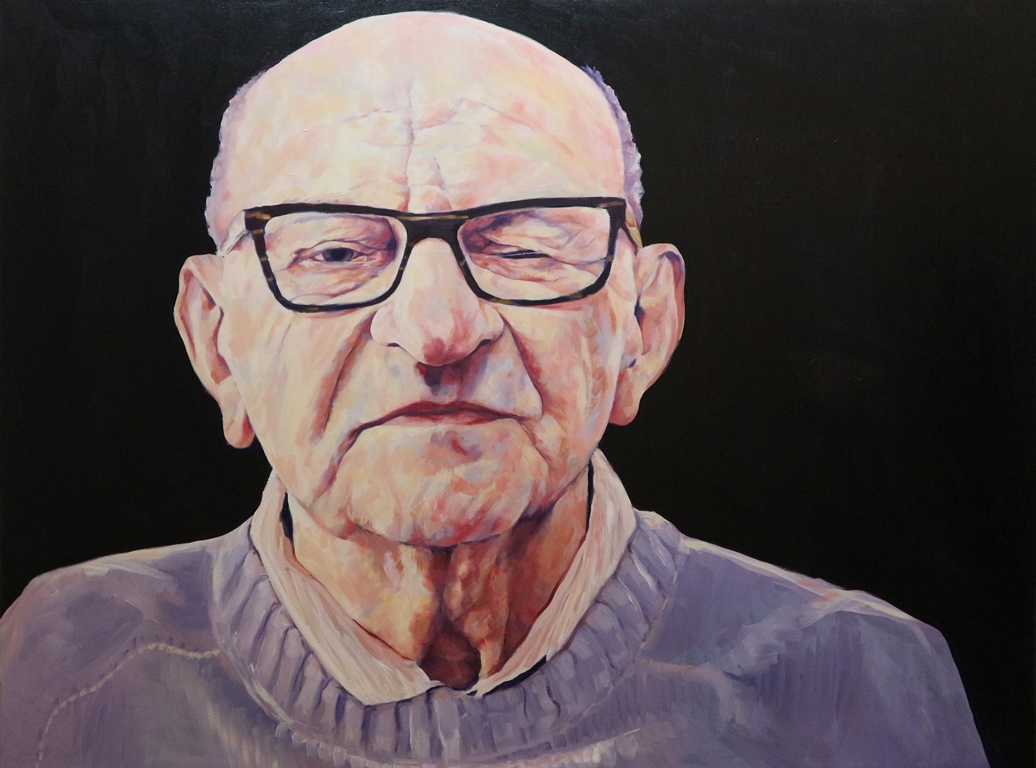
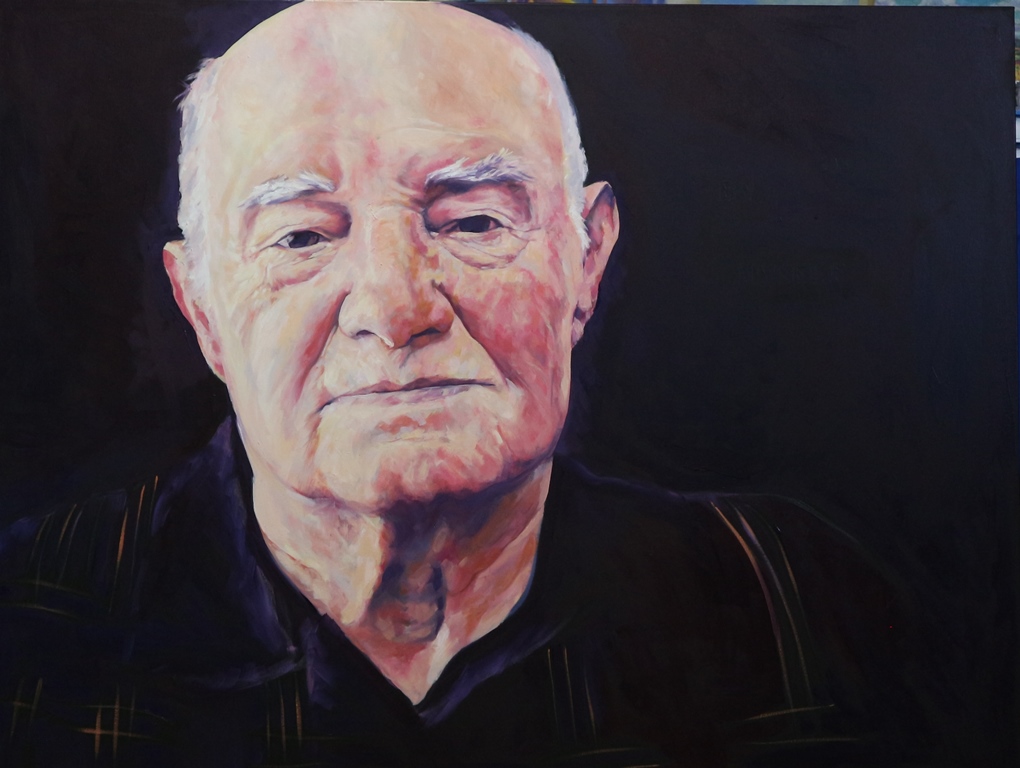
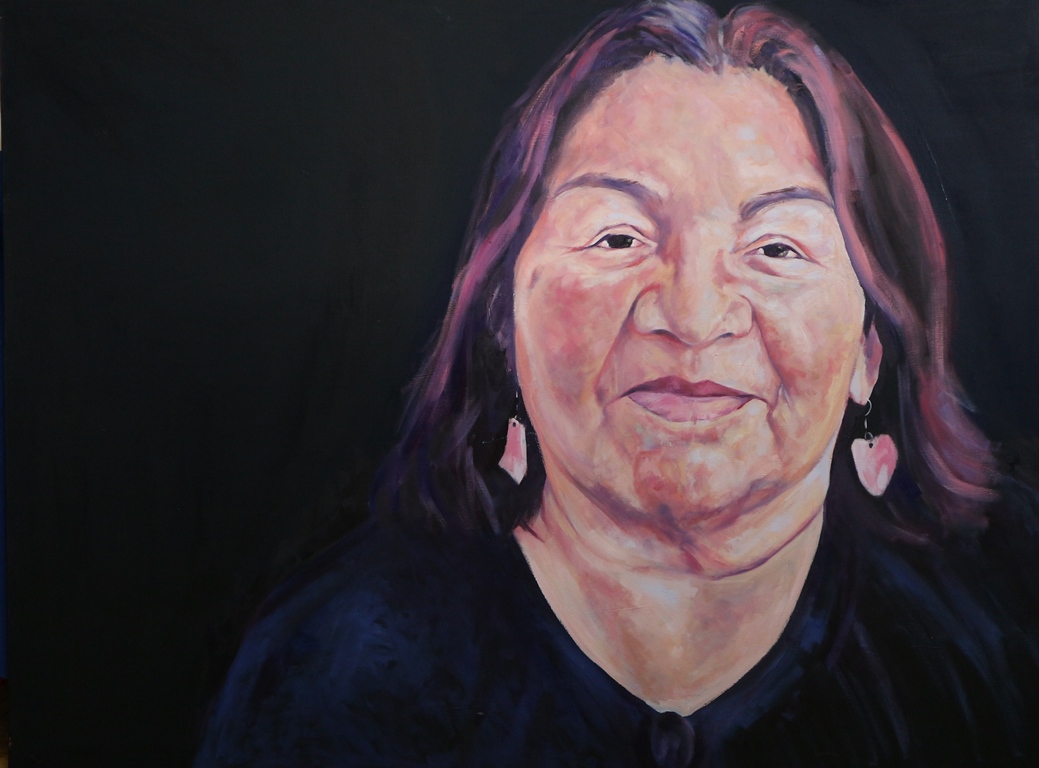
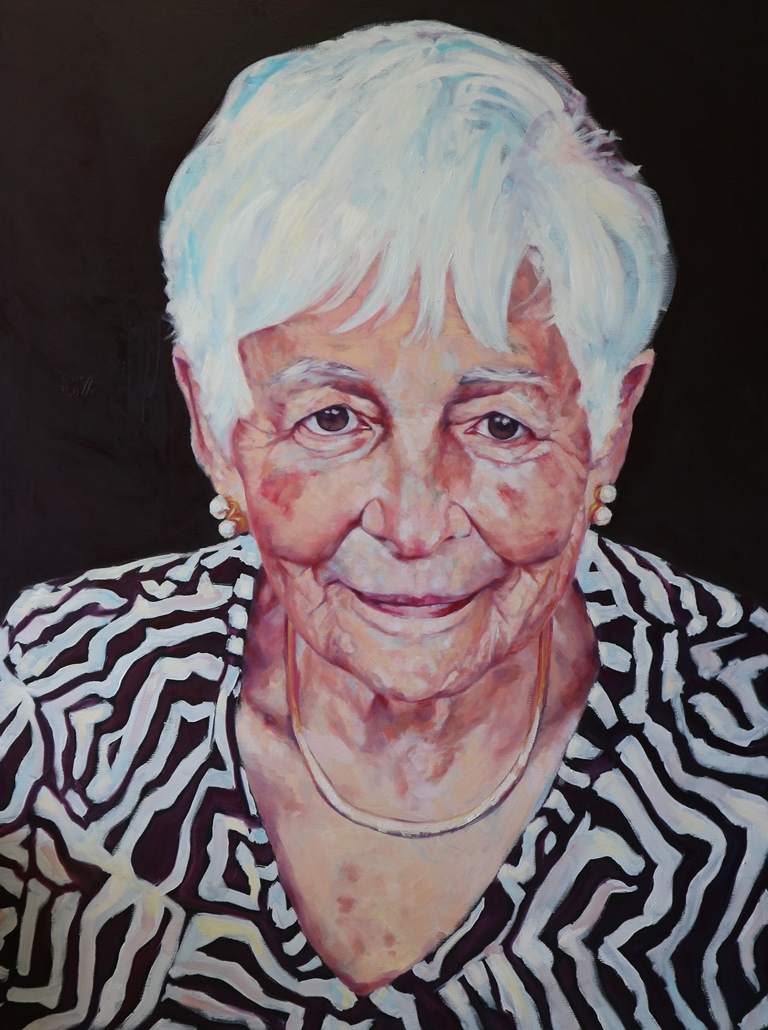

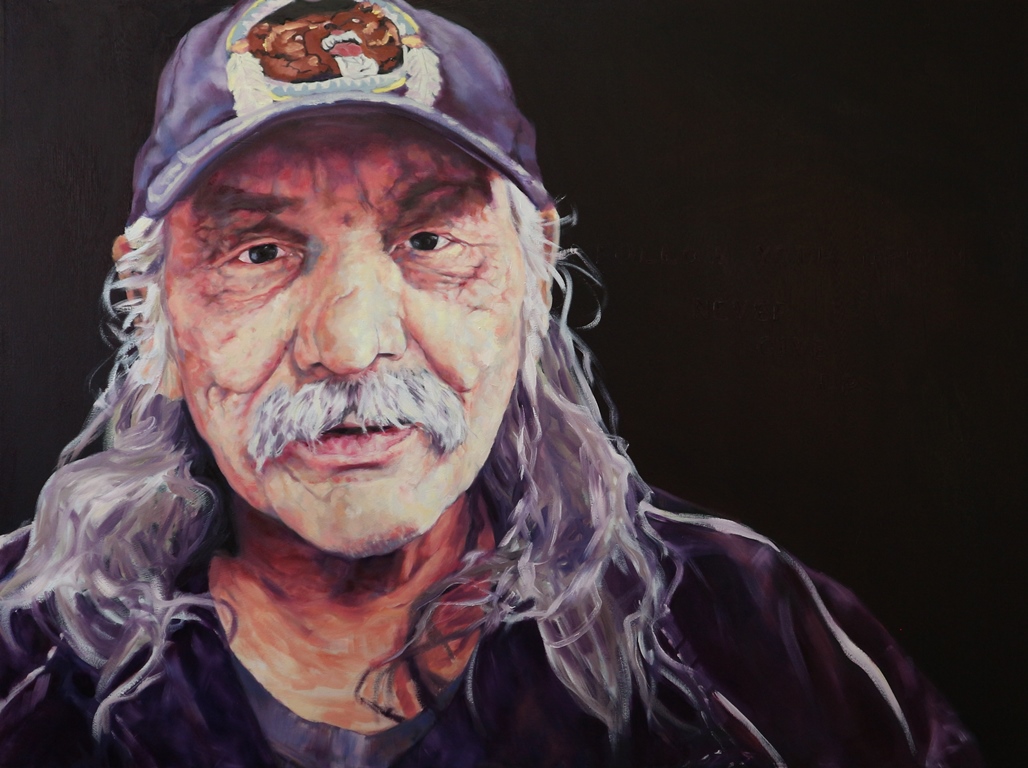
They didn't know we were seeds
Project/Artist Statement – Carol Wylie
In 2016, at the Saskatoon Holocaust Memorial service, I witnessed survivor Nate Leipciger speak of his experiences in a Nazi death camp, and his ongoing efforts to educate and shed light on these atrocities. I was struck, as I always am after hearing these firsthand accounts, by the extent of abuse a human being can endure at the hand of another. I pondered beginning a project of painted portraits of Holocaust survivors, as a record of these memories. At the same time several events occurred in my life recalling the issue of the residential school experience of 150,000 Indigenous children. Indian Affairs Superintendent Duncan Campbell Scott, in 1910, called residential schools “The Final Solution,” preceding Hitler’s similar pronouncement regarding the death camps and the “Jewish problem”. Separating families, cutting hair, replacing names with numbers were oppressive methods of dehumanizing and othering utilized in both instances. I learned that both groups of survivors have connected around strategies of survival and healing. Indigenous survivors and Jewish survivors speak of a solidarity forged from the shared need to find ways of healing personal and generational trauma in the wake of horrendous abuse and attempted genocide, and of the need to educate.
Due to the advanced age of holocaust survivors, it seemed important to acknowledge these extraordinary people who endured and survived, and to find a way to preserve their personal stories. The connection between holocaust and residential school survivors that emerged for me, as a settler in Saskatchewan with its notorious history of residential schools, was the impetus behind expanding the project to include portraits of residential school survivors. Hearing that history and those stories could be a small, personal step toward the Truth and Reconciliation Commission’s calls for action, listening and bearing witness. All the residential school survivors who chose to participate entrusted me to share their history, through portraiture, with integrity. For this I am deeply grateful.
The painted portrait is the methodology through which I can contribute. A portrait inhabited by the subject has the potential to offer a form of engagement with that person even in their absence. Through portraits of individual survivors, I hoped to create a silent dialogue between Jewish survivors and Indigenous survivors. The project is a series of eighteen portraits. Eighteen in Hebrew tradition represents the word chai which means life. Those with whom I met spoke so honestly and poignantly that, in some cases, I incorporated their words as text into the portraits. The project title is inspired by Greek poet Dinos Christianopoulos’ They buried us…they didn’t know we were seeds, which was the perfect metaphor for the lives of these survivors; buried under the hand of oppression only to endure and thrive, build lives, families and community contribution. My hope is that this work will give viewers a chance to encounter a survivor they may never meet, understanding that a single personal story can have more resonance than statistical abstractions, no matter how appalling. My hope is that the strength and courage of the survivors inhabits these portraits.
When I began this project, the Truth and Reconciliation Commission was new, and answering those calls regarding residential school survivors seemed especially pressing. Years later, a sharp rise in antisemitism makes the centering of the memories of holocaust survivors equally pressing.
This project explores memory, trauma, shared pain, the strength of the human spirit, and an enduring hope that in truly hearing one another’s stories and feeling deep in our bones that we are part of one human family, we can learn to replace cruelty with compassion.
*I would like to gratefully acknowledge the Saskatchewan Foundation of the Arts for their generous support of this project.
Click link for CBC National News Story on the project:
https://www.youtube.com/watch?v=VyoEVuoM5Z4
Click link for Edmonton Community Foundation podcast about the Seeds project
https://www.thewellendowedpodcast.com/episodes/episode-133-parallels/
Click link for recorded conversation with Robby Waisman (Holocaust Survivor), Eugene Arcand (Residential School Survivor), moderated by Marcus Miller (Director/Curator Mann Art Gallery) and Carol Wylie (artist):
Click link for a video on the Seeds exhibition at the Estevan Art Gallery:
Click link for TBT Gallery Interview
Upcoming “Seeds” Exhibitions
St. Thomas More Gallery, University of Saskatchewan, June 7 to September 19, 2025
QE II Gallery, Government House, Regina SK, June 19 to September 19, 2027